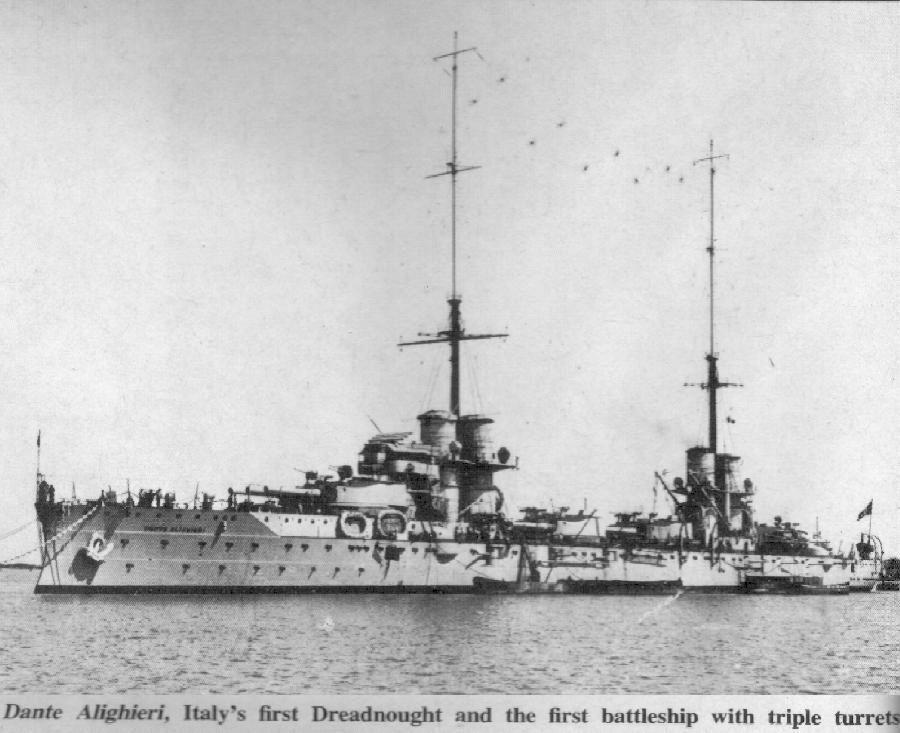Sunday Battleship Blogging: Regia Marina Dante Alighieri
 Naming a battleship is more complicated that it might seem. A dreadnought battleship was more than just a weapon; it represented national power in its purest and most visible form. Names, therefore, carried with them political implications. The various navies of the world used different protocols to name their battleships. The US Navy was probably the most programmatic; battleships were to be named after states, cruisers after cities, destroyers after people, submarines after fish, and aircraft carriers after famous battles. This has changed over the years, of course. The Kriegsmarine named its battleships after former monarchs, great admirals, and German states. The Royal Navy took names from all manner of different sources, including great battles (Agincourt), military commanders (Nelson, Marlborough, Iron Duke), monarchs (Queen Elizabeth), and famous old ships (Dreadnought). The Soviets changed the names of all of Russian battleships to suitably revolutionary terms after 1920, then changed them back during World War II. Only the Italians seem to have named a battleship after a poet.
Naming a battleship is more complicated that it might seem. A dreadnought battleship was more than just a weapon; it represented national power in its purest and most visible form. Names, therefore, carried with them political implications. The various navies of the world used different protocols to name their battleships. The US Navy was probably the most programmatic; battleships were to be named after states, cruisers after cities, destroyers after people, submarines after fish, and aircraft carriers after famous battles. This has changed over the years, of course. The Kriegsmarine named its battleships after former monarchs, great admirals, and German states. The Royal Navy took names from all manner of different sources, including great battles (Agincourt), military commanders (Nelson, Marlborough, Iron Duke), monarchs (Queen Elizabeth), and famous old ships (Dreadnought). The Soviets changed the names of all of Russian battleships to suitably revolutionary terms after 1920, then changed them back during World War II. Only the Italians seem to have named a battleship after a poet.
Dante Alighieri was the first Italian dreadnought, and one of the first battleships anywhere to carry its main armament in triple turrets. The disposition of the turrets (four down the centerline, but not superfiring) gave Dante Alighieri a particularly heavy broadside for its 19500 ton displacement. Like later Italian warships, Dante could make a good speed (23 knots) but sacrificed protection.
Dante Alighieri had a relatively uneventful career. Designed to counter the dreadnoughts of the Austro-Hungarian Navy, Dante patrolled a great deal but never saw battle, as the Austrian ships rarely left port. The newer Italian battleship Leonardo Da Vinci wasn’t so lucky, being blown up by Austrian saboteurs in 1917. Italian frogmen replied by sinking the Austro-Hungarian battleship Viribus Unitis just after it had been transferred to the new Yugoslav Navy in 1918.
Dante Alighieri survived the war, but not the peace. Although the Regina Marina went to the trouble of putting her through a major reconstruction in 1923, it decided to discard the ship in 1928, and Dante was sent to the scrapyard.


